AOI 50th Anniversary – Here for the members!
From direct advice to increasing promotion opportunities, we highlight the various ways in which we’ve supported our members through the past five decades.
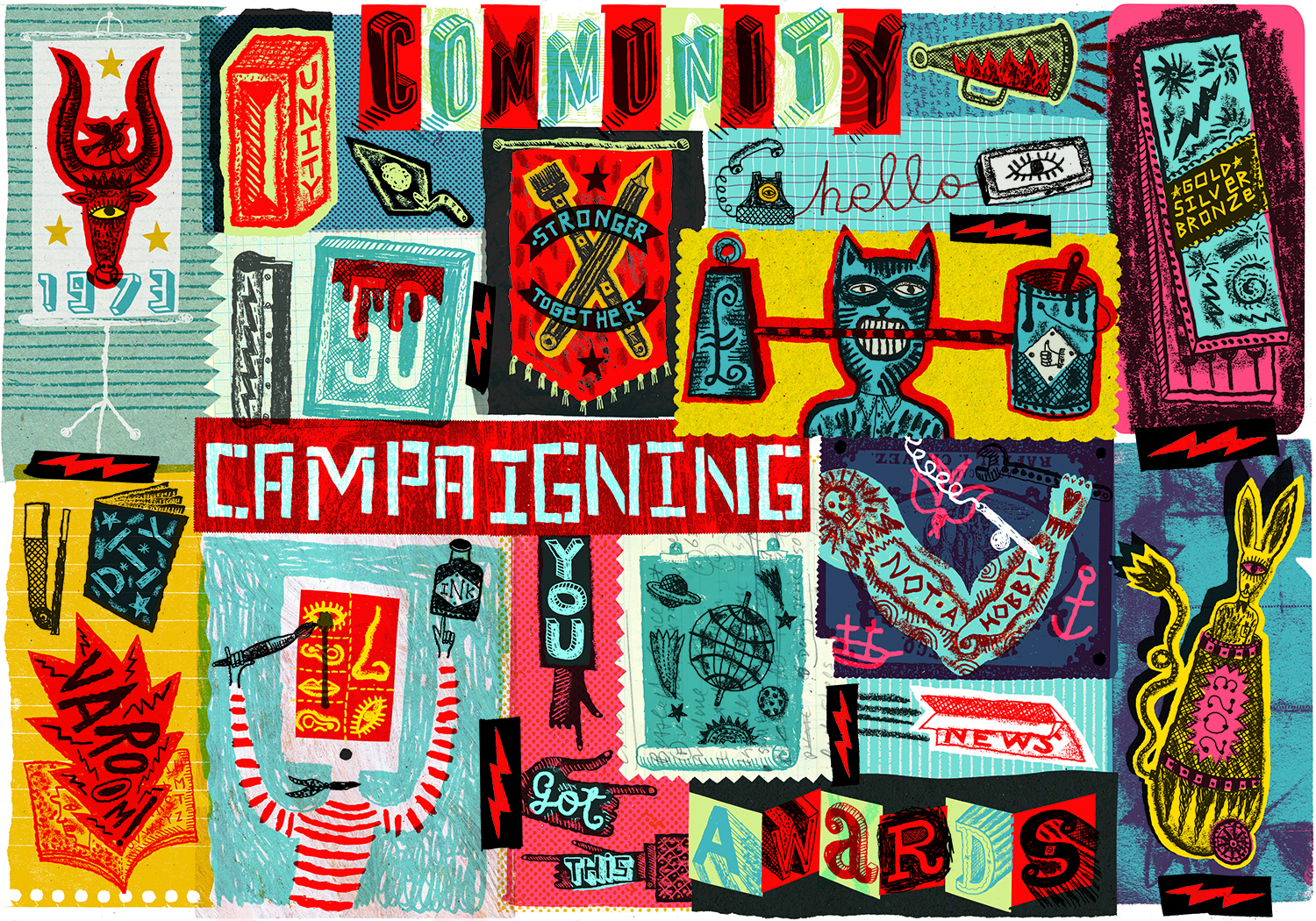
In this piece we’re celebrating the AOI’s 50th Anniversary, and what the organisation has done for members from our beginnings in 1973 up to 2023.
Membership services have long been at the core of the AOI’s structure (we’re here to help illustrators!), and over time the services have evolved to assist members in all their business dealings, whether you are an established artist with an unfamiliar client enquiry or a new illustrator feeling that there’s a lot of unfamiliar ground to get a grip on.
AOI publications
Communication with members was, of course, always important, and for much of the AOI’s timespan this meant issuing printed material. The first basic black and white AOI Newsletter was mailed to every illustrator that the original committee had contacts for in March 1974, with an illustration of the AOI’s governing committee as its cover.
Peter Brookes was editor for many issues, ‘I remember a strong committee, many of whom were professional illustrators. Terrence Dalley, Rufus Segar, Angela Landels, Jannat and Norman Messenger, among others, would meet in Jannat and Norman’s flat in Chiltern Street, off Baker Street. We would debate ways of highlighting the problems we faced, as well as commissioning interviews with the famous (e.g. Edward Ardizzone) or the unsung (e.g. the master of scraper-board, Bill Butt).’
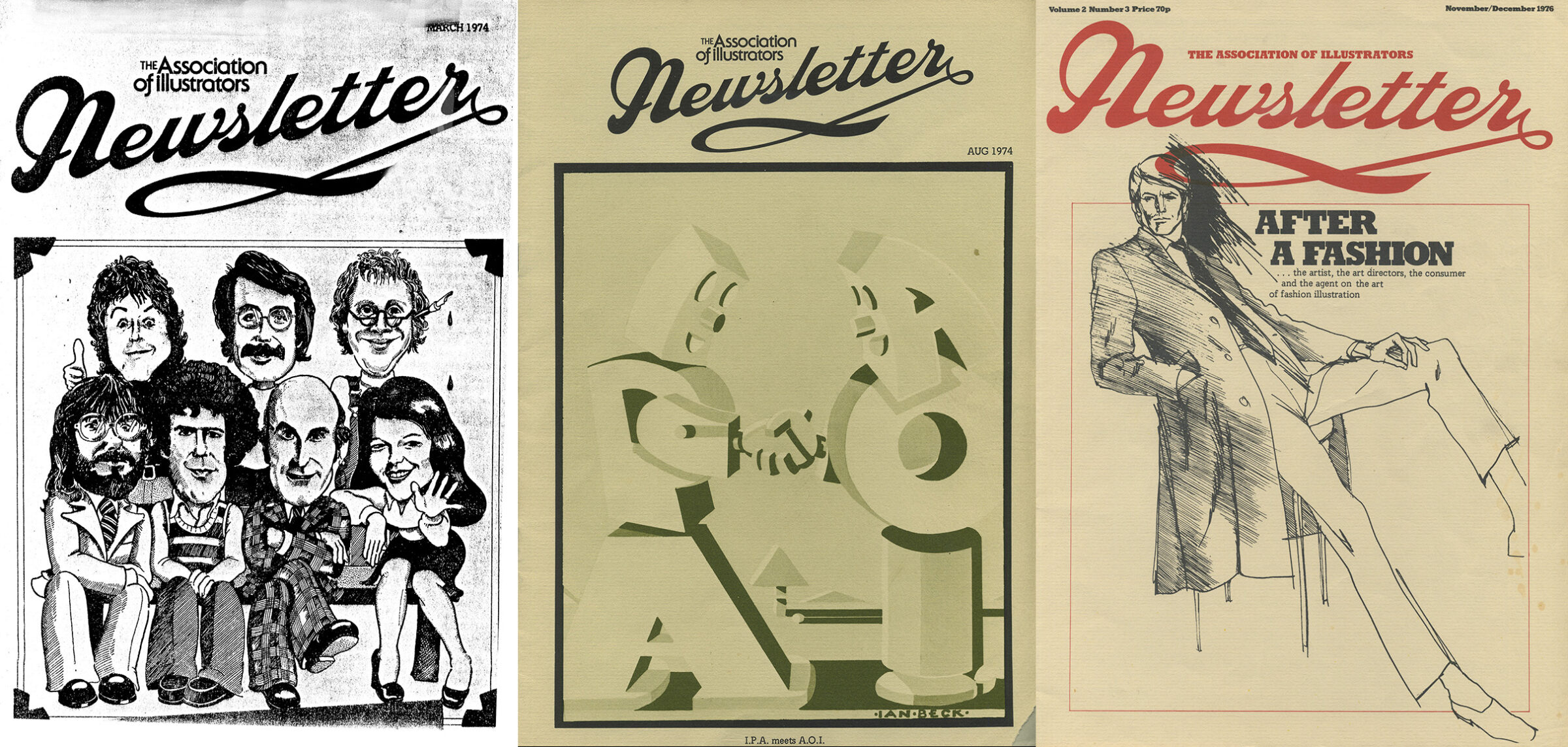
The publication was then sent out regularly to members from 1974 to 1977, followed by a redesign to create Illustrator magazine from 1977 to 1989, with the first issue printed on a three-colour Rank Xerox copier.
The magazine was eventually printed in four colours, but became more costly to produce by the late 1980s, and a downturn in the AOI fortunes meant that the last colour issue of Illustrators was published in 1989, followed by a belt-tightening 16 page B&W paper called The Journal which then became Illustrator and lasted up to 1999.
From 2000 another colour was added to what was again called The Journal, but with membership swelling there were more funds to create an enlarged version of the magazine, which was published quarterly between up to 2005 with Jo Davies and Samantha Taylor as the original editors.
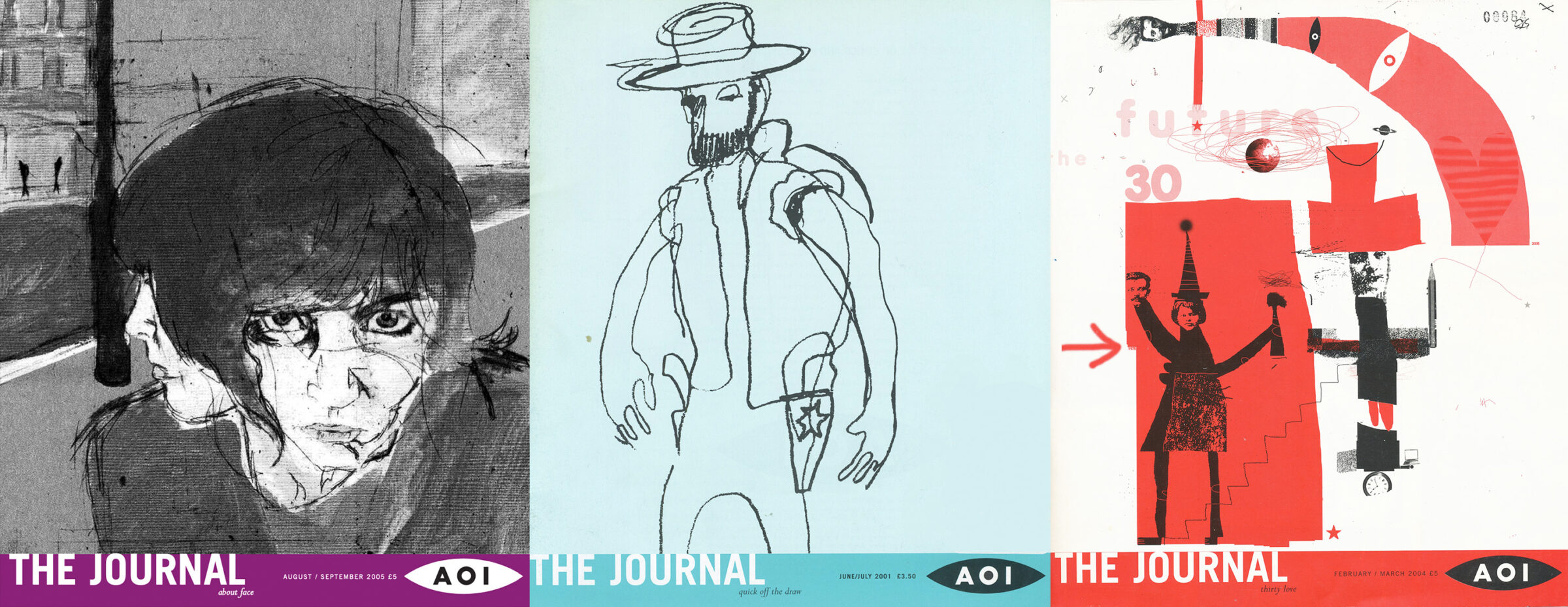
As Editor in chief, Jo Davies became ‘expert in sweet talking illustrators, clients and fellow educators to contribute articles to launch what started as a bi-monthly magazine.’ Occasional guest editors included academics, Esther Dudley and Steve Braund.
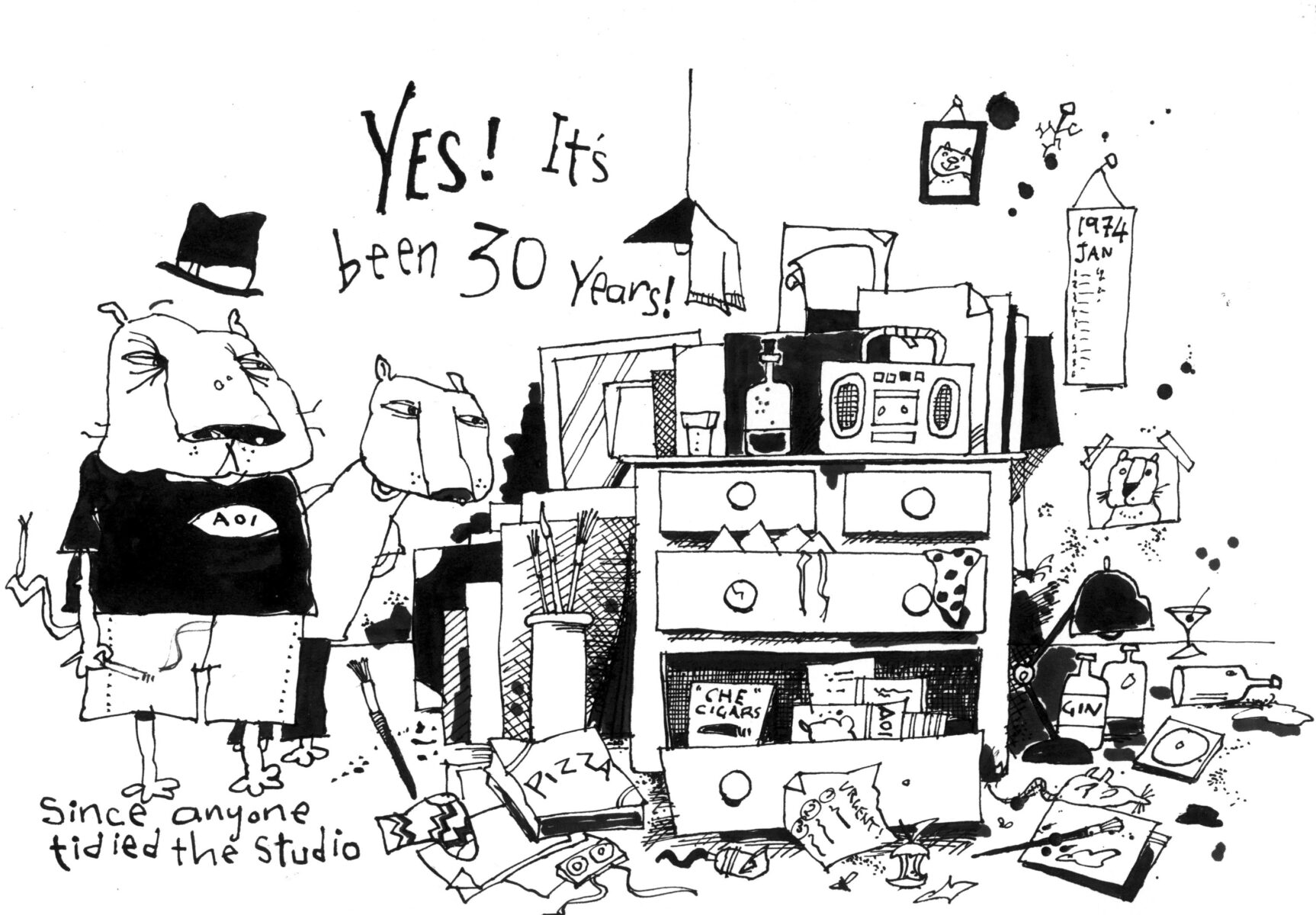
In 2006 a rethink took place about what the magazine could do for the AOI if it was focused on illustration in general, aimed a wider audience, with specific information for members being distributed via an additional publication. As a result Varoom – the journal of illustration and made images (its original longer title) was born, with the UP poster for members as its companion. Varoom was produced from 2006 to 2021 with three excellent editors, Adrian Shaughnessy, John O’Reilly and Olivia Ahmad. The UP poster was produced up to 2009, edited by the membership team, with a regular cartoon by Francis Blake (who’d also contributed great cartoons for earlier publications).
The 1980s
The early Eighties were heady years for illustration and for the AOI. Business was booming and the AOI was, comparatively speaking, thriving. Membership reached a high point of 1400 and stayed there for a good number of years, but then the financial crash in the late Eighties caused issues for everyone.
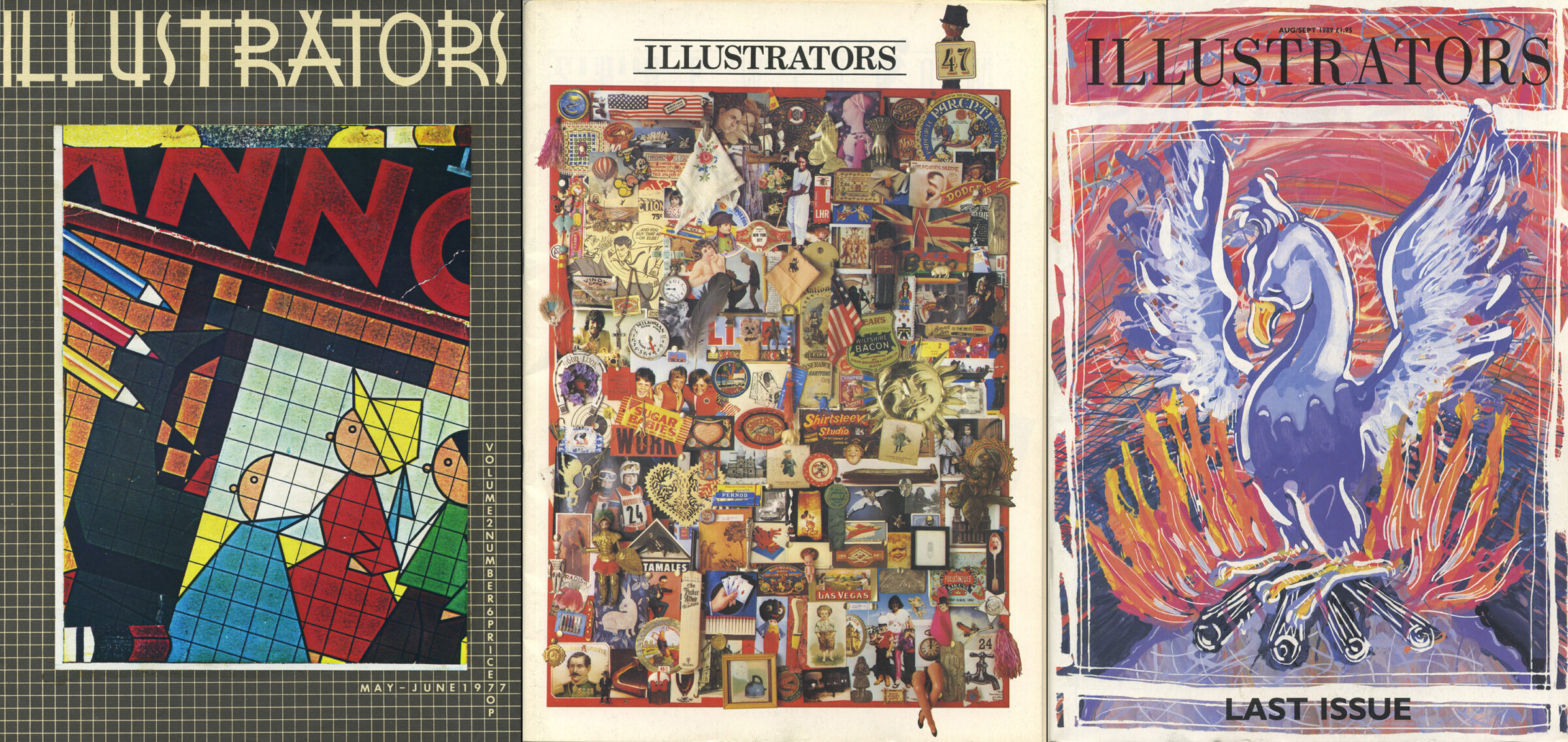
First published in 1977, the now costly four-colour Illustrators magazine was loosing £4500 per issue, so that and the companion Despatch printed newsletter were stopped in 1989, and their replacement, the 16 page B&W The Journal was published at a cost that fit the newly reduced budget. Including news, exhibitions and information on campaigning and articles, The Journal contained a regular column by John Gosnell that cast ‘a jaundiced eyeball over the illustrator’s everyday existence’!
A positive move in 1989 was the publication of Rights – an illustrator’s guide to professional practice. For £15 you got essential business and legal information for illustrators, including the AOI Model Terms & Conditions, how to write a Licence, Contracts Book Publishing Agreements and more. Written by extremely knowledgeable board member, Simon Stern, with a cover illustration by Ian Pollock, this was the forerunner to the later Illustrator’s Guide to Law and Business Practice.
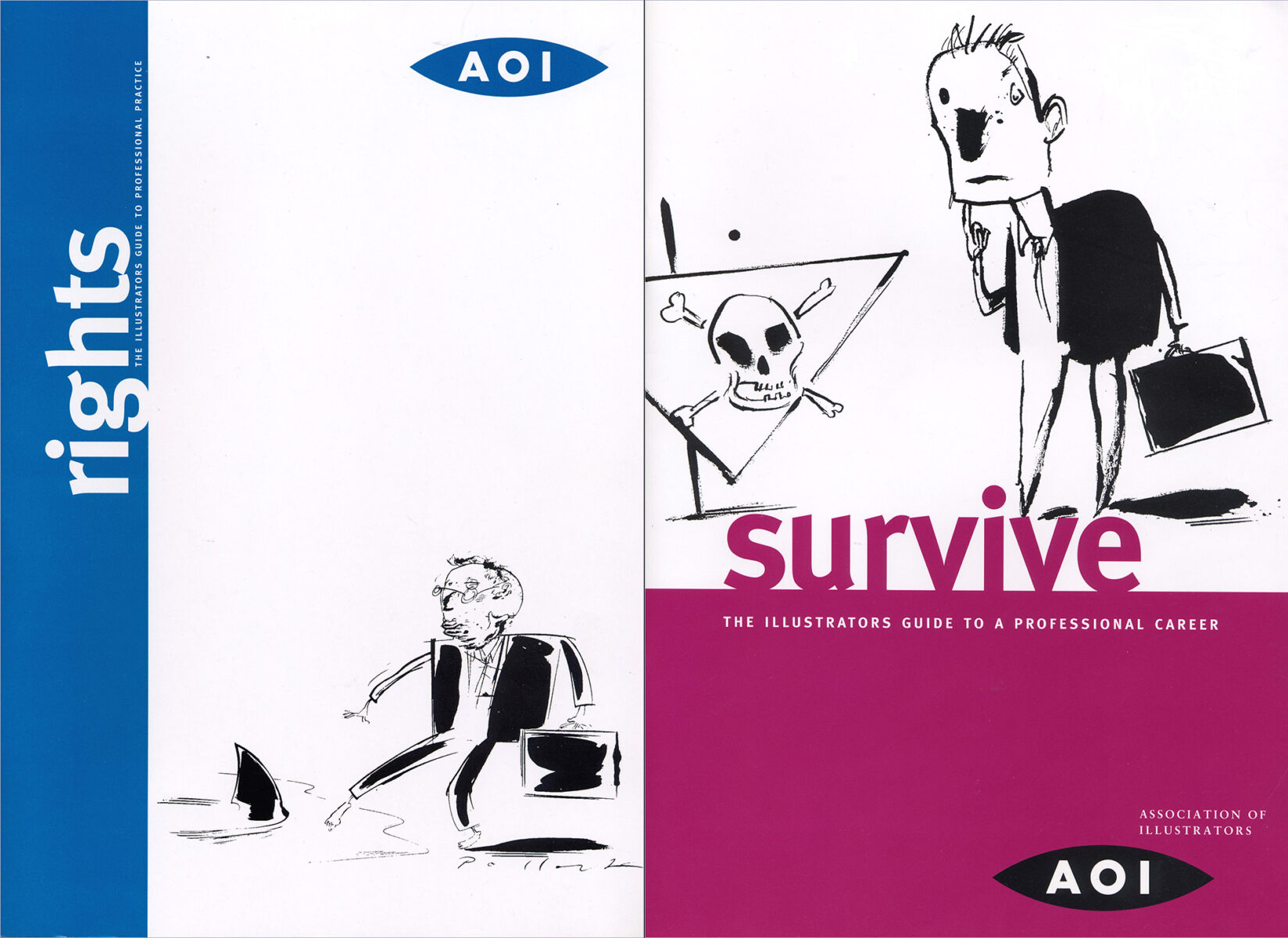
The 1990s
Although for many years illustrators wishing to join the AOI as full members have not had to offer evidence of publication, at this point members needed to demonstrate that they had four pieces of work published in one period of 12 months preceding their application. This didn’t apply to students and new illustrators.
Recognising the need for illustrators to have easier access to client contact details, The Editorial Directory ‘the first in a series of Directories of Illustration Users’ was published by AOI in 1994, detailing 120 editorial commissioners, including those essential fax numbers, of course – all for just £15. This was followed later in the year by the Publishing Directory (the Advertising Directory surfaced in 1999). The Directories have been updated with contact info and commissioning preferences every year since, a fairly mammoth task appreciated by those who purchase the listings and don’t have to do it themselves!
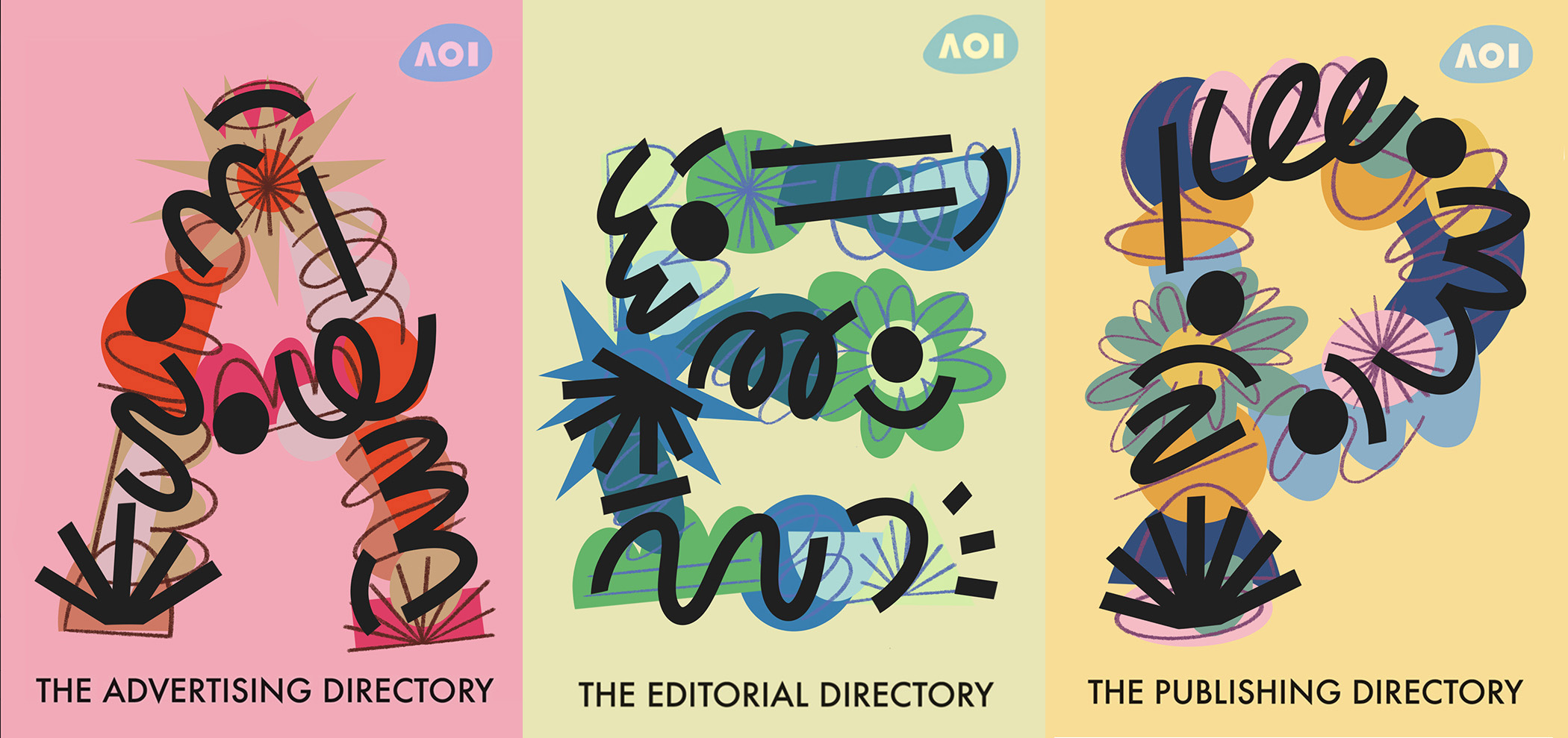
Although much was changing, by 1995 the office still didn’t have a computer (they cost a lot) and staff members were pleading for one to help with their many tasks. A Banner Computer readership survey that year said that a mere 6% of small businesses accessed the internet. Clearly that was going to change, but illustrators did need some persuading. In an article in The Journal on issues facing illustrators Carmel Hayes said, ‘It is important to view the computer as an additional medium to use, and just as with any other medium it should be tried and explored, adopted or rejected.’ Interesting parallels with views on AI in 2023.

The digital was making inroads into many aspects of life, and to help members with promotion AOI worked with Creative Image Directory to encourage members to purchase space on a CD-ROM disc that was distributed to art buyers directors and editors throughout the industry. They could stick it into their computers and browse the images – no more having to turn pages.
The Nineties publication, renamed just Illustrator, was edited by Ruth Gladwin, then Lee Beech and from 1997 by then Board member Derek Brazell. This had slimmed down to eight pages, but went out monthly and contained practical, informative articles, many by Ruth who was a lawyer, along with news and interviews.
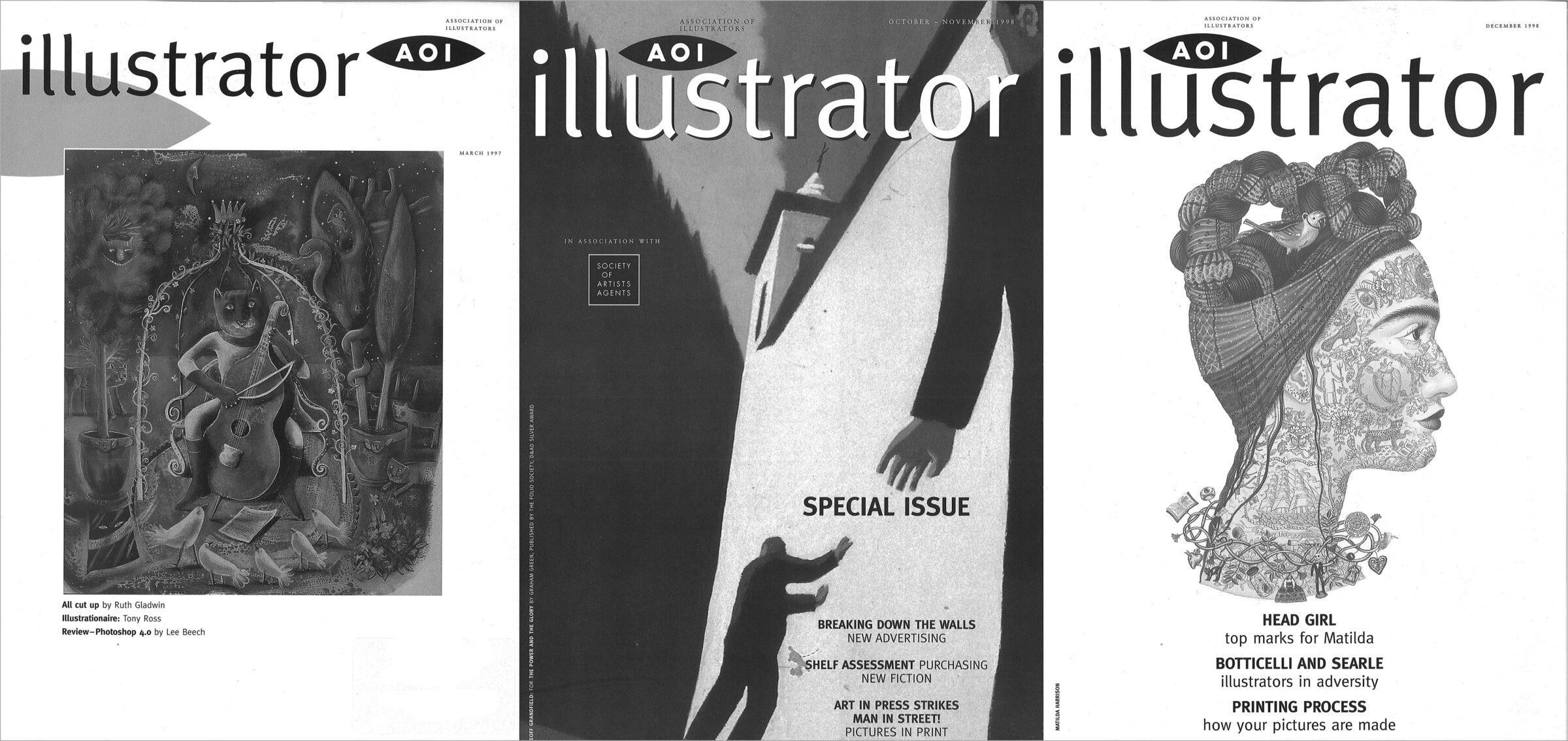
1998 saw our very first website launched and the AOI’s 25th anniversary celebrated, and as producing or supplying artwork digitally was gaining hold, in 1999 Stuart Briers produced a guide for The Journal, ‘A Rough Guide to Digital Delivery’, explaining how to send illustrations intended for print as e-mail attachments and how to optimise artwork for use on the web. The following year he wrote about basic website construction and considered the opportunities and resources available to illustrators on the web. All essential information to help illustrators transition to the digital age.
The 2010s
Illustration processes kept expanding as the new century dawned, and The Journal published a comprehensive guide by Stuart Mealing for those thinking of getting their first computer to create artwork on. ‘Remember also that saving to a floppy disc is not archivally sound – if a file might need to be kept safely for ten years then optical discs and CDs are more reliable.’ Ah, the perils of digital archiving (which continue to be an issue).
Membership was just below 900 in 2001, but was growing and this allowed the AOI to open for five full days a week from the four days previously. Members could now get in touch over the whole working week, and work continued on adapting, with the Acceptance of Commission form made available for members to download as a print-ready pdf in 2002.
AOI has long worked with colleges, and in 2000 the first meeting of the ‘Education Forum’ was held with representatives from 28 institutions attending along with AOI representatives. The agenda covered issues concerned with the provision of Illustration and its teaching in a broad range of institutions in the UK with the Forum being active for a few years. AOI staff continue to deliver Business Masterclasses to students from AOI College members, helping the next generation understand what’s required for a successful career in illustration.
The Journal would occasionally cast a critical eye at illustration, and in 2002 illustrator and academic, Robert Mason asked, ‘But am I alone in wondering why so much commissioned work currently seems content to wander round in circles, uncritically employing the limited charms of scanned-in and digitally-tweaked stock photography, inert line, and flat colour? There have been times recently when – as well as being bored per se by much of this work – I have also felt quite offended: my brain can do more complicated stuff, like light, surface, pictorial depth, and – crucially – character and atmosphere.’
Moving on from the CD-ROM, the precursor of AOI Folios – the AOI Image File – went live online in early 2003. A permanent collection of published illustration work from all areas of the industry, it contained over a thousand images making it ‘the ideal place for art directors to find the illustrator best suited to their projects’. Features included favourites folders, e-mail, image rating and sort options.
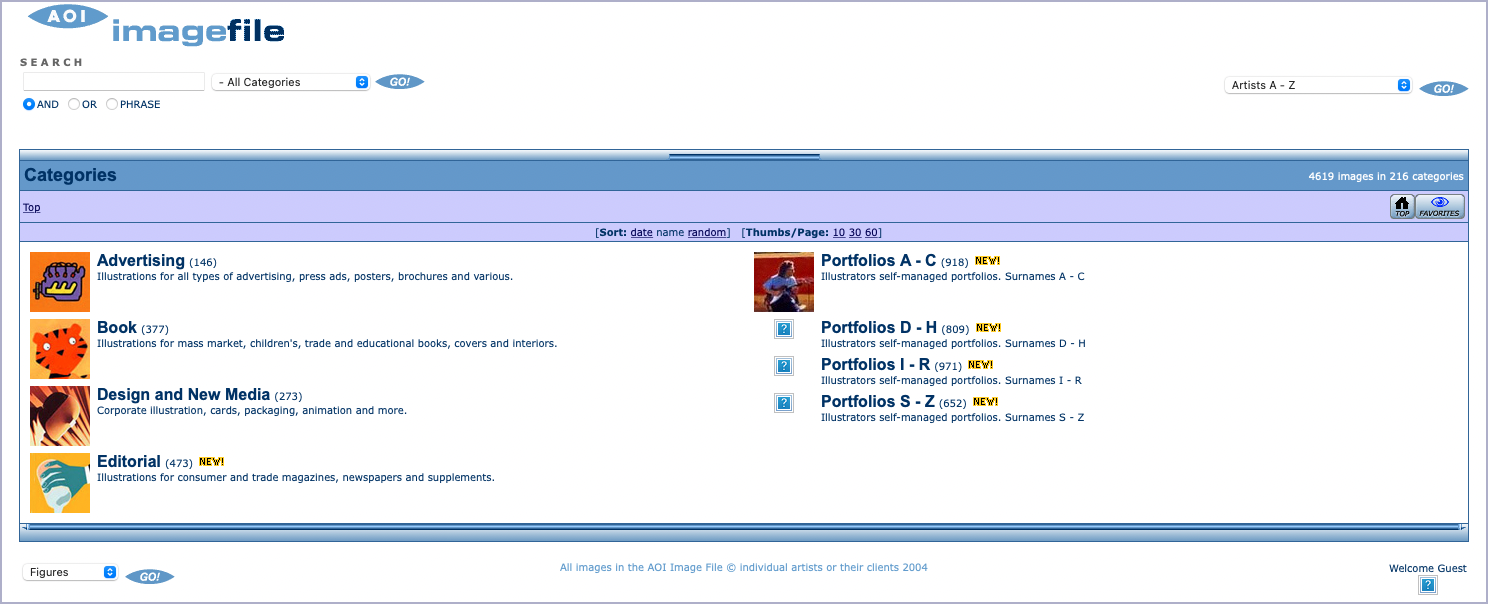
As many illustrators will know, not all clients understand the illustration commissioning process, and in 2004 the Guide To Commissioning was produced following requests from AOI members. The document is still required today, and acts as an aid/checklist to the commissioning process, outlining the major issues to the benefit to both commissioner and illustrator. Then, as now, good communication between the illustrator and client was encouraged at all times.
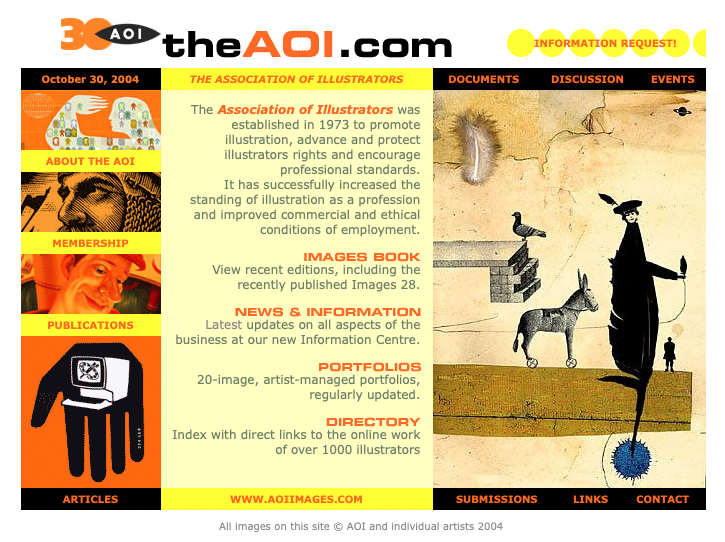
The Code of Practice for Member Agents was produced in 2005, written in conjunction with the Society of Artists Agent’s Code of Ethics. This useful new code laid out the expectations of how an agency would operate with their artists, and AOI continues to ask that all agent members adhere to its points.
In 2006 AOI launched its new tri-annual illustration magazine: Varoom – the journal of illustration and made images, The publication was the result of much internal debate, and AOI manager Silvia Baumgart andJournal editor, Jo Davies worked with a new Editorial Board and Editor Adrian Shaughnessy to create a bold new magazine designed by Non-Format. The aim with Varoom was to create a magazine that examined the role of illustration in contemporary society ‘stuffed with visual delight’, rather than focusing on the business side of the industry. Members received Varoom and also the quarterly UP poster which carried more industry-based and events info for members.
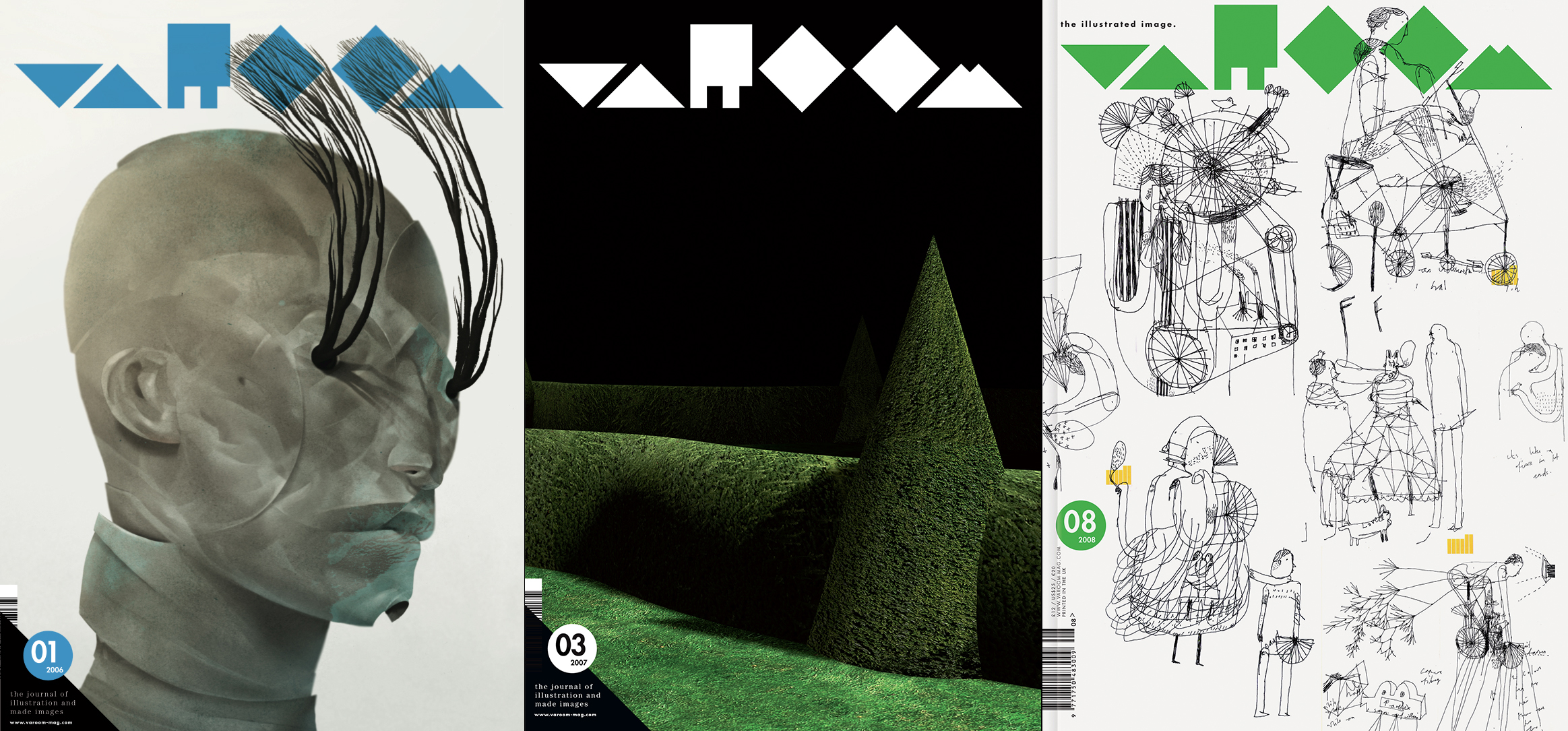
‘My plan is to produce a magazine that seeks to explain the power of the ‘made’ image in the modern world,’ said Adrian Shaughnessy, ‘Within visual culture, illustration has been neglected, eclipsed by its noisier siblings, advertising and graphic design. But that is changing. There’s an interest in illustration that goes beyond the professional sphere.’
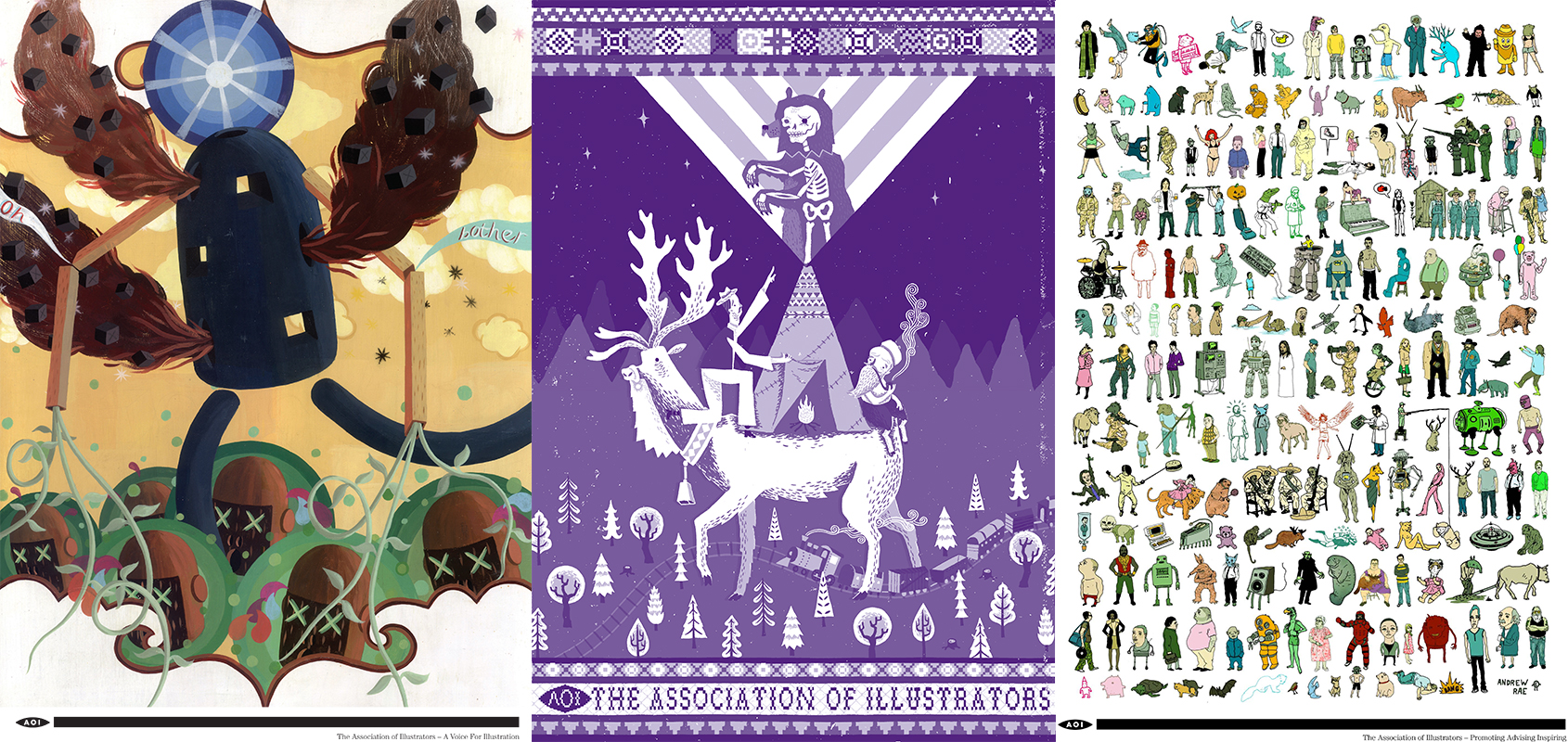
The magazine was considered a great success and three years later a new team of editor John O’Reilly and designer Fernando Gutiérrez took over the reins, starting the first of a few redesigns of the magazine. It moved into an A3 newsprint format for 22 issues, allowing for images to be printed at a large size, before reverting to a magazine format once more.
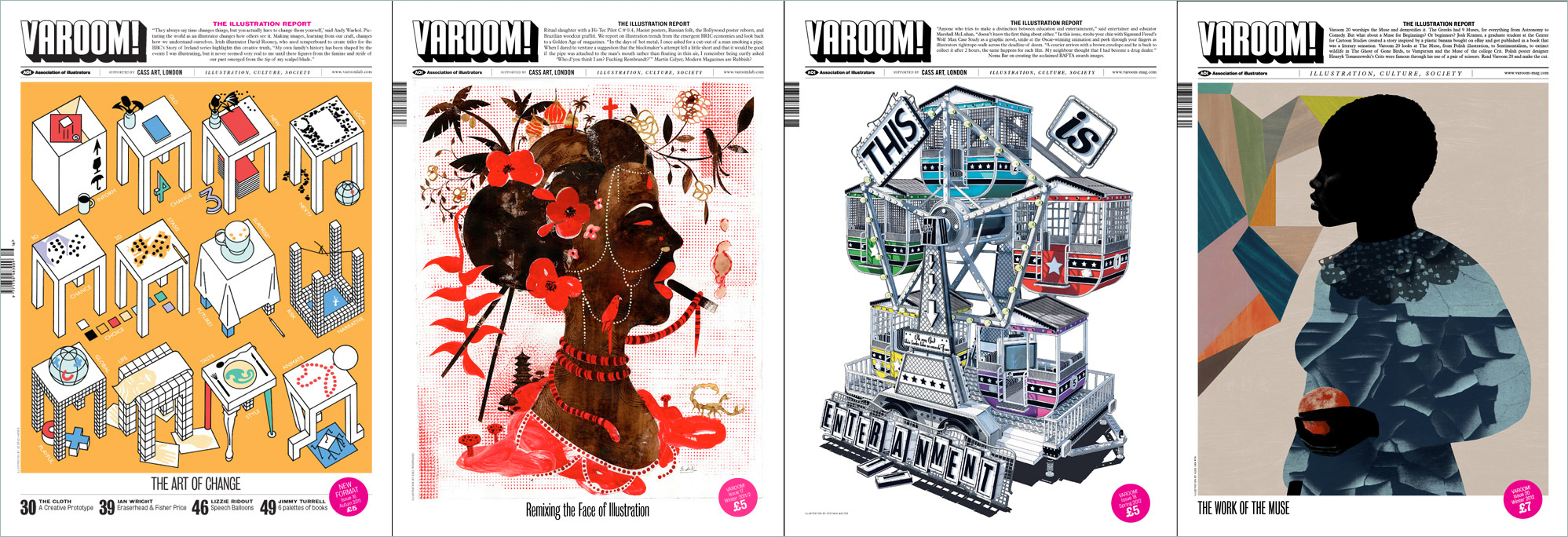
Recognising the benefit of expanding the Rights publication, in 2008 The Illustrator’s Guide to Law and Business Practice was published. A publication AOI is rightly proud of, this unique, comprehensive guide with contemporary illustrations covers all aspects of the law likely to affect illustrators. Including recommended terms and conditions, advice on calculating fees, how to write a licence agreement and protect oneself against exploitative practices.
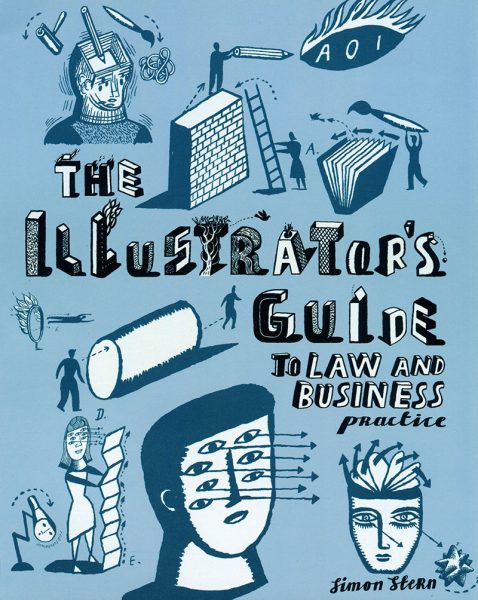
Following on from his Rights book, the handbook was written by Simon Stern, AOI patron and a renowned expert on illustration and the law, and was the result of many years of research. Simon also trained up the AOI’s ethical advisors, leaving a vital legacy that benefits members to this day.
Although it’s important for the subject of illustration, the platforms for illustration research are limited, and in 2010 the AOI’s academic research network, VaroomLab, was created by Jo Davies. The network went on to issue four calls for papers on a range of illustration themes. The VaroomLab peer review panel assessed the papers and subsequently four successful symposia in conjunction with university partners were held at Plymouth University in 2012, Swansea University in 2013, University Bournemouth in 2014 and Birmingham City University in 2016. All the papers were published and you can find them here.
Following two limited term mangers and a period where the AOI staff ran the organisation with major support from the Board’s Chair, Andrew Coningsby of Debut Art, Ren Renwick joined as CEO of the AOI in May 2016, and a short while later David Gilbert joined the Board as Chair. By the following year membership increased by 10% to over 2000
Also in 2017, Quentin Blake Centre for Illustration Artistic Director, Olivia Ahmad took over editorship of Varoom magazine for the next five issues, bring a wealth of knowledge in the area to the role. The new design was done by the Fraser Muggeridge studio (below).
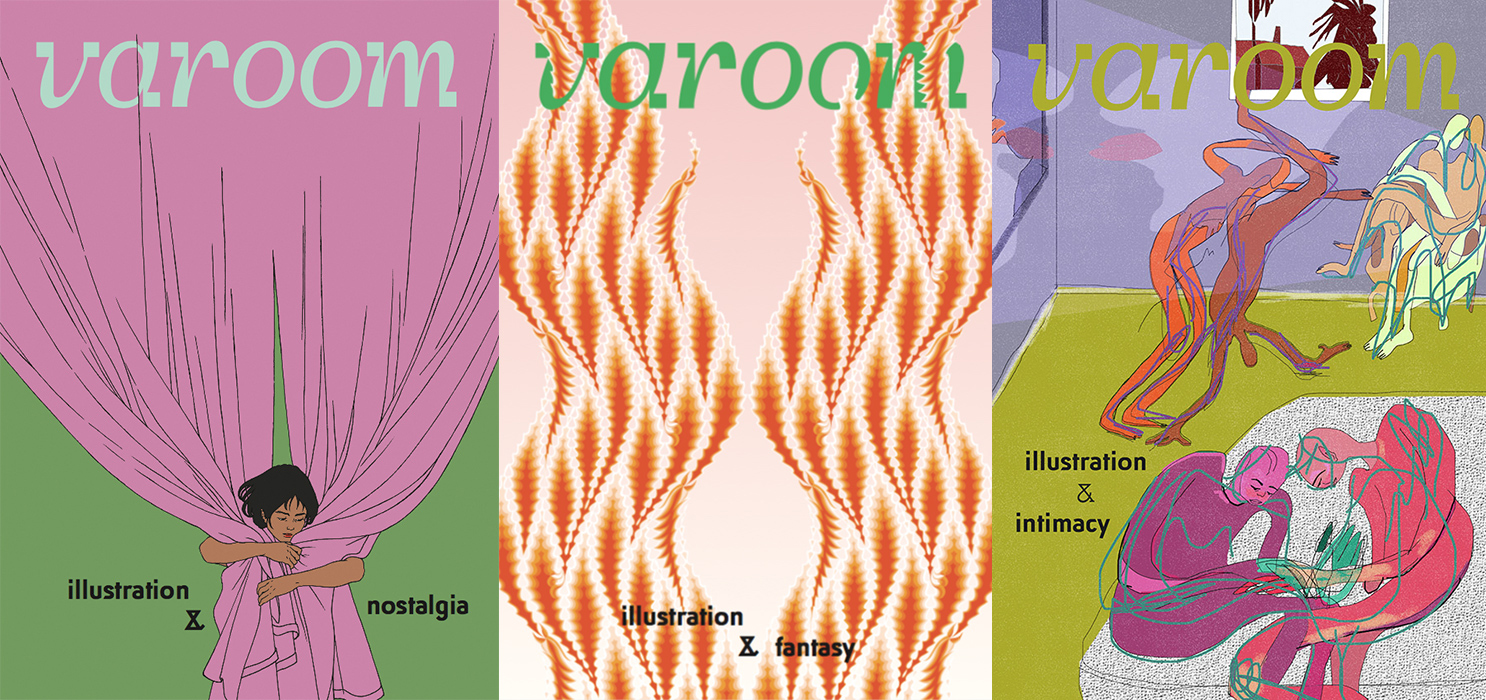
The 2020s
Always aware that illustrators need assistance in working out fee levels to offer quotes to their clients, in 2020 AOI designed and launched the Pricing Calculator which breaks down the industry into a range of areas, allowing members to select the relevant area, input their own figure and move through the calculator choosing appropriate drop downs before receiving a bracketed set of results. The Calculator has been one of the top visited pages of the website, proving it to be an immensely beneficial membership resource.
As much of the world shut down due to Covid 19, AOI pivoted to a more online presence during the pandemic, quickly starting webinars to make sure that members could still benefit from connection to the association. College Business Masterclasses started to be delivered by staff online, which proved to be a successful way of engaging the students and reaching more universities.
In late 2021 we started our first Mentorship Scheme designed to help member illustrators who are under represented in the industry. Mentees received six sessions (online) with their mentor over a 3-6 month period, and feedback was very positive, resulting in the scheme being repeated over the next two years.
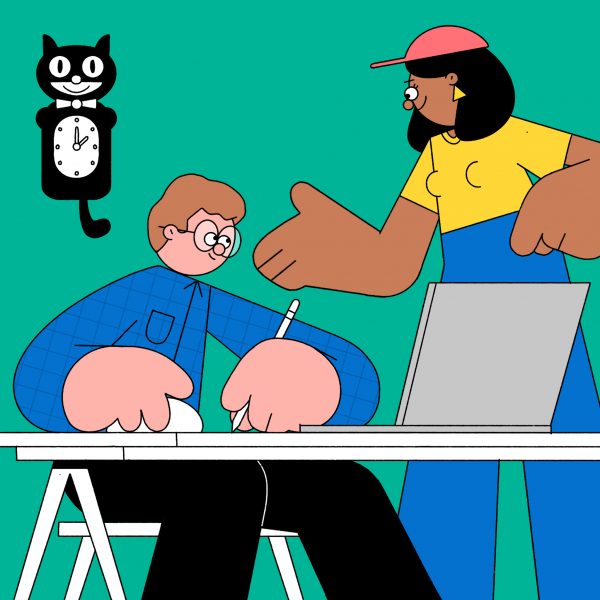
Following feedback from a member survey, the final issue of Varoom was published and AOI focused on more content for members online, resulting in the creation in 2022 of a new suite of content under the umbrella title of Inside Illustration – a multi-platform season for members focusing on a particular area of illustration for each Season. The first season on Editorial Illustration received a really positive reaction from members, and included a podcast, a Creative Course for members, in-depth article, resource, commissioner interview and a comprehensive ‘How To…’ guide publication for those interested in entering the area based on the season theme.
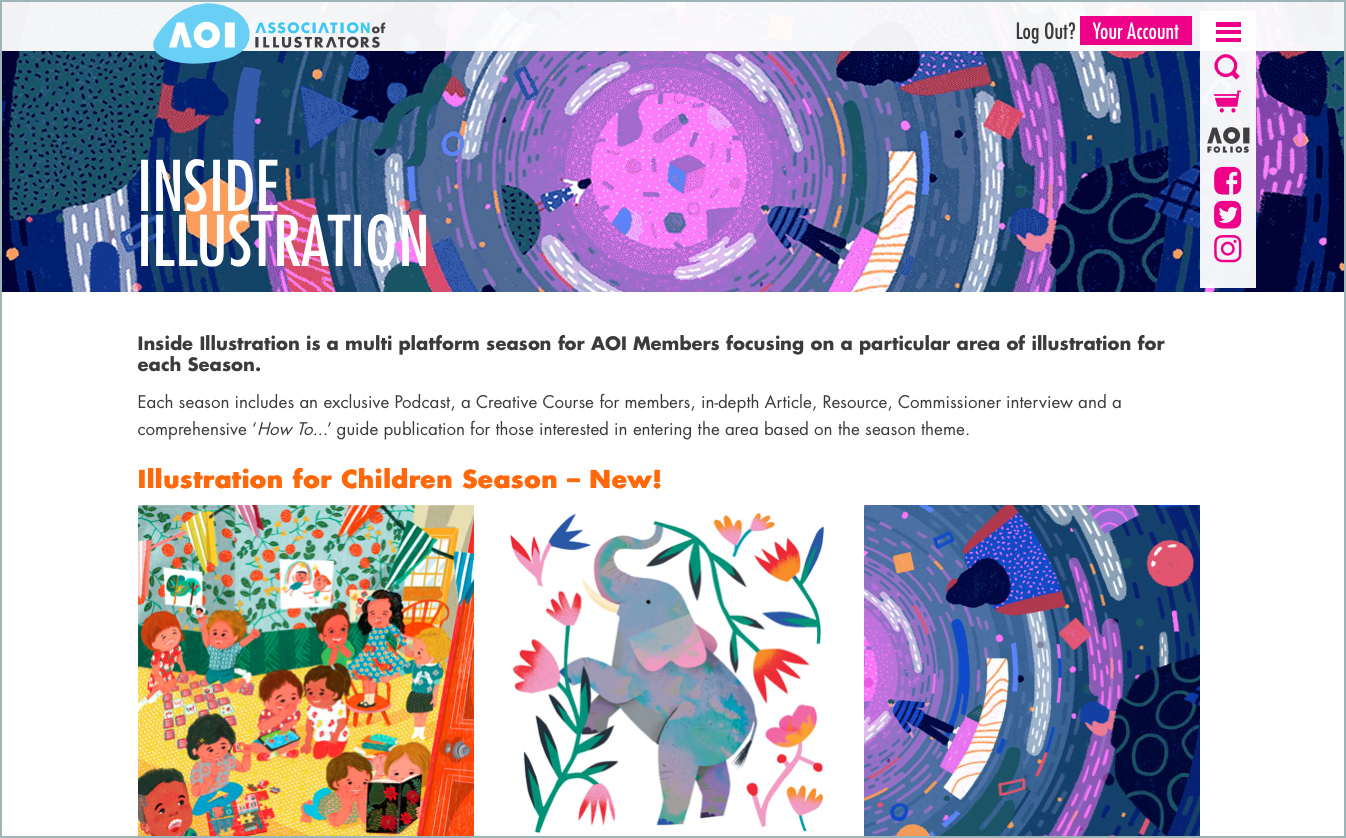
The reveal that artificial intelligence/ machine learning (AI) could generate images and text via online platforms took a while to register, but the artistic community became more aware throughout 2022 that AI was trained on an enormous amount of visual and written content scraped from the internet, and that none of the AI platforms had made requests to take artists’ images. In early 2023 AOI published our initial statement on artificial intelligence/machine learning recognising illustrators concerns in the area and stating that only data where the owner has given explicit permission should be used by AI for training.
We’ve continued to inform our members and the broader illustration community on AI, taking part in a range of events and sessions, including the AI/ML Media Advocacy Summit in March and arranging our own recent events along with the EIF. See our anniversary piece on Campaigning here.
AOI Chair David Gilbert says, “The AOI has reached a milestone this year in having provided support to Illustrators for 50 years. Over that period the industry has changed massively and we have been there to help our members adapt and capitalise on these changes. We are very confident that our support to our members will prove just as valuable in the future as in the past, as fresh challenges emerge. Congratulations to all at the AOI, past and present, for a terrific achievement of which we should all be very proud.”
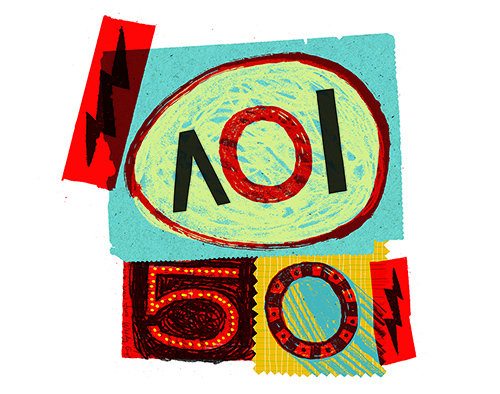
AOI 50th anniversary illustration and logo by Jonny Hannah
More on our Anniversary:
AOI 50th Anniversary – Here for the members! Fifty years of support for illustrators
AOI 50th Anniversary – Got your back! Campaigning AOI’s achievements for all illustrators
AOI 50th Anniversary – Awards and Events From the first annual in 1976 to World Illustration Awards
AOI 50th Anniversary – I was there! Recollections from important AOI contributors
Back to News Page
